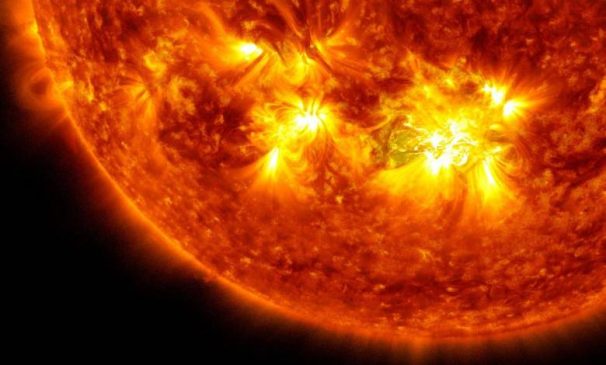Nasa said that the two solar flares were X-class solar flares. X-class solar flares are the strongest solar flares and can cause communications blackouts.
Nasa’s Solar Dynamics Observatory on Saturday (local time) captured two mega solar flares being emitted from the sun. Nasa classified the flares as X5.8 and X1.5-class flares.
X-class solar flares are the largest solar flares. The smallest solar flares are classified as B-class, followed by C and M classes. They are similar to the Richter scale for earthquakes, each letter represents a ten-fold increase in energy output.
Read More: AstraZeneca Pulls COVID Vaccine from EU, Begins Global Withdrawal
X-class flares more than 10 times the power of an X1, so X-class flares can go higher than 9. In 2003, space agencies witnessed the most powerful flare on record during the solar maximum. The sensors measuring it were overloaded and cut out at X17 and the flare was later estimated to be about X45.
Read More: Donald Trump To Joe Biden: Check List Of Top Contenders For US Presidential Election 2024
These X-class flares can create long lasting radiation storms. A blog post by Nasa says X-class flares like that can create long lasting radiation storms and can harm satellites and even give airline passengers small radiation doses.
Read More: IMF warns of high downside risks for Pakistan’s economy
It said it can create long lasting radiation storms which can create global transmission problems and world-wide blackouts.
“The Sun emitted two strong solar flares on May 10-11, 2024, peaking at 9:23 p.m. EDT on May 10, and 7:44 a.m. EDT on May 11. NASA’s Solar Dynamics Observatory captured images of the events, which were classified as X5.8 and X1.5-class flares,” NASA said in a post on social media site X.
“Solar flares are powerful bursts of radiation. Harmful radiation from a flare cannot pass through Earth’s atmosphere to physically affect humans on the ground. However — when intense enough — they can disturb the atmosphere in the layer where GPS & communications signals travel,” it further added.
Auroras lit up skies across swaths of the planet for the second night in a row on Saturday, after already dazzling residents from the United States to Tasmania to the Bahamas the day before.
A powerful solar storm — which could continue into Sunday — has triggered spectacular celestial shows usually confined to the far northern reaches of the planet, hence their nickname of the “northern lights.”





































